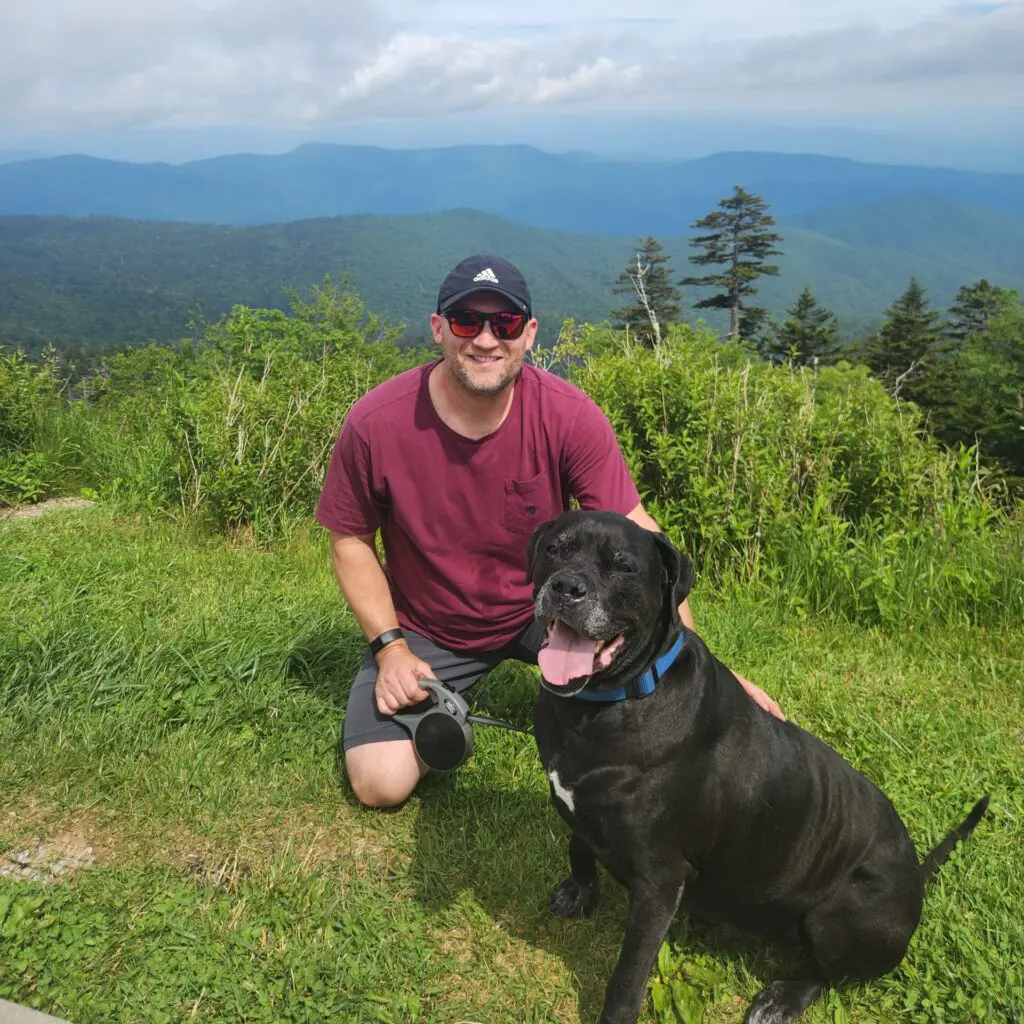Ever notice how anxiety seems to be everywhere these days? With a staggering 40% of Americans reporting increased anxiety since Covid, you’re not alone in searching for answers.
That’s why we’ve found the 11 best books for anxiety, carefully chosen based on thousands of reader reviews and success stories. From mindfulness masters to brain science experts, these authors offer different paths to the same goal: a calmer, more peaceful mind. Let’s explore why readers can’t stop talking about these life-changing books.

“The Gifts of Imperfection” by Brené Brown
“The Gifts of Imperfection” helps readers embrace who they really are, flaws and all. Brown shares personal stories and research to show why trying to be perfect causes stress and unhappiness. She teaches that true happiness comes from accepting ourselves and living authentically.
For people with anxiety, this book offers practical tools to let go of constant worry about meeting impossible standards. Brown’s warm, conversational writing makes you feel like you’re talking to a friend who understands your struggles. She shows that being “good enough” isn’t just acceptable – it’s the key to living a fuller, more peaceful life.
“The Language of Emotions” by Karla McLaren
“The Language of Emotions” helps readers understand their feelings as valuable messengers rather than problems to fix. McLaren explains how each emotion, even difficult ones like anger or fear, carries important information about our needs and boundaries. She gives practical tools to work with emotions instead of fighting them.
For people with anxiety, this book shows how to listen to worry and fear as signals rather than threats. McLaren’s clear approach helps readers develop a new relationship with their emotions, turning overwhelming feelings into useful guidance. She teaches that all emotions serve a purpose and can help us navigate life more effectively.
“The Anxiety and Phobia Workbook” by Edmund Bourne
“The Anxiety and Phobia Workbook” serves as a practical guide for anyone dealing with anxiety disorders or phobias. Bourne provides clear, step-by-step strategies including breathing exercises, relaxation techniques, and methods to challenge anxious thoughts. What makes this book especially helpful is its interactive format – readers actively work through exercises rather than just reading about solutions.
For people with anxiety, the workbook offers a comprehensive toolkit they can use daily. Bourne breaks down complex concepts into manageable pieces, teaching readers how to build their own anxiety management plan. The book combines proven therapeutic approaches with the latest research in anxiety treatment.
“You Can Heal Your Life” by Louise Hay
“You Can Heal Your Life” explores the connection between thoughts and physical and emotional wellbeing. Hay presents the idea that negative thoughts and self-criticism can contribute to problems in our lives, while positive thinking and self-love can lead to healing. She provides affirmations and mental exercises to help change harmful thought patterns.
For people with anxiety, this book offers a gentle approach to replacing worried thoughts with more supportive ones. Hay’s compassionate writing style encourages readers to be kinder to themselves. While some may find her approach too simple, many readers appreciate her focus on how changing thoughts can improve emotional health.
“Wherever You Go, There You Are” by Jon Kabat-Zinn
“Wherever You Go, There You Are” introduces mindfulness meditation in a clear, down-to-earth way. Kabat-Zinn explains how to stay present in the moment instead of getting lost in worries about the future or regrets about the past. He breaks down complex meditation concepts into simple, practical exercises anyone can try.
For people with anxiety, this book offers a way to step back from racing thoughts and find calm in the present moment. Kabat-Zinn’s straightforward writing makes meditation feel accessible rather than mysterious. He shows how simple awareness of our breath and surroundings can help reduce stress and increase peace of mind.
“Mind Over Mood” by Dennis Greenberger and Christine Padesky
“Mind Over Mood” is a practical guide that teaches cognitive behavioral therapy (CBT) techniques to manage difficult emotions. Greenberger and Padesky show readers how to identify harmful thought patterns and replace them with more balanced thinking. The book includes worksheets and exercises that help readers track their moods and challenge distorted thoughts.
For people with anxiety, this book provides concrete tools to examine and change the thinking patterns that fuel worry. The authors break down complex psychological concepts into clear steps anyone can follow. Their structured approach helps readers become their own therapist, learning skills they can use throughout their lives.
“Creative Visualization” by Shakti Gawain
“Creative Visualization” teaches readers how to use their imagination to create positive changes in their lives. Gawain explains how to use mental imagery and affirmations to achieve goals and reduce stress. She combines meditation techniques with visualization exercises to help readers picture their desired outcomes.
For people with anxiety, this book offers a way to redirect worried thoughts into positive mental pictures of calm and success. Gawain’s writing style is encouraging and accessible, making visualization feel like a natural tool anyone can use. She shows how spending time imagining positive outcomes can help reduce fear and build confidence in achieving goals.
“Radical Acceptance” by Tara Brach
“Radical Acceptance” teaches readers how to stop fighting their difficult emotions and instead meet them with compassion. Brach combines Buddhist wisdom with Western psychology to show how accepting our thoughts and feelings – rather than judging them – can lead to inner peace. She shares personal stories and meditation practices that help readers face their fears with gentleness.
For people with anxiety, this book offers a different approach: instead of trying to eliminate anxious feelings, they learn to hold them with understanding. Brach’s warm, engaging writing helps readers see that their struggles don’t define them. She shows how self-acceptance can be more healing than constant self-improvement.
“Atomic Habits” by James Clear
“Atomic Habits” shows how tiny changes in daily routines can lead to remarkable life improvements. Clear explains that habits are like compound interest – small 1% improvements add up to massive changes over time. He provides practical strategies to make good habits automatic and break unwanted ones by changing your environment and identity.
For people with anxiety, this book offers a manageable way to build calming routines and break anxiety-producing habits without feeling overwhelmed. Clear’s writing uses clear examples and actionable steps, making habit change feel possible rather than daunting. He shows how focusing on small, consistent actions rather than massive changes can lead to lasting transformation.
“The Artist’s Way” by Julia Cameron
“The Artist’s Way” is a 12-week program that helps readers unlock their creativity and overcome creative blocks. Cameron introduces two core tools: morning pages (daily stream-of-consciousness writing) and artist dates (weekly solo adventures to refill your creative well). She explains how creative expression can heal emotional pain and build self-trust.
For people with anxiety, this book offers a structured way to process worried thoughts through writing and creative activities. Cameron’s gentle, encouraging tone makes artistic expression feel accessible to everyone, not just “real artists.” She shows how creativity isn’t just about making art – it’s about discovering yourself and finding inner peace through self-expression.
“Unwinding Anxiety” by Judson Brewer
“Unwinding Anxiety” shows readers how to break anxiety cycles using brain science and mindfulness. Brewer explains anxiety as a habit loop that can be rewired, just like other habits. He combines neuroscience research with practical mindfulness techniques to help readers recognize their anxiety triggers and create new response patterns.
For people with anxiety, this book offers hope by explaining the brain mechanics behind their worries and providing clear steps to change them. Brewer’s writing makes complex brain science accessible and actionable. He teaches how to become curious about anxiety rather than fighting it, leading to lasting change rather than temporary relief.
More from Bananomad
- What exactly is heart rate variability (HRV) training? Bananomad explores this topic and helps you maximize your heart health.
- We reveal the best foods for a healthy gut microbiome, complete with practical tips and easy recipes to help you get started.
- Have you ever found yourself in a spot where your cell phone signal fades to nothing? For many adventurers and outdoor enthusiasts, a reliable walkie talkie isn’t just useful—it’s essential.


Leave a Reply